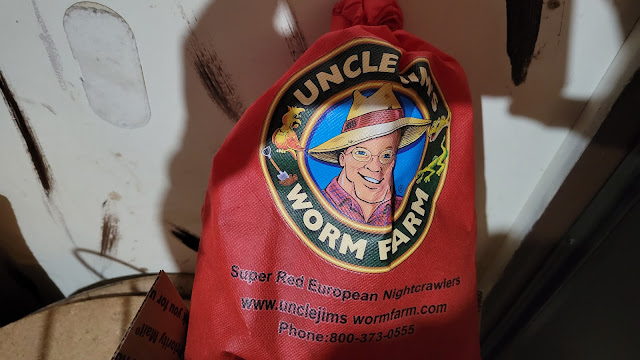For people who enjoy nature in an area that experiences several months of winter weather. This is prime time! I hope you will enjoy the plants and sights of spring highlighted here.
The Black Locust tree blooms are glorious this year. Many trees exhibit more blossoms than leaves right now. The honey bees love the nectar and the blooms smell good. Folks who enjoy foraging for wild foods find the blooms a delicacy.
Raspberries are another great nectar source for honey bees. We encourage our black raspberries on the property because we like honey and the fruits of successful pollination.
See the owl? I think it tucked itself under a canopy of leaves to avoid the songbirds. We usually are tipped off to the location of an owl in daytime by the cacophony of angry songbirds. They don't like owls. We sure do. They eat mice and are fun to watch.
Prickly Pear cactus budding. These bloom yellow. Yes, this is in Michigan. I see them in the median of the highway in southwest Michigan blooming in mid June. These are next to a parking lot of a business.
One morning, I saw this tiny, perfectly formed oak leaf on the front bumper of my vehicle. It reminded me of an infant child, fully formed, with so much growth potential ahead.
This is the time of year to run across an egg out of place. I wonder what the back story is here?
I saw mamma robin sitting above her nest and wondered why. When she left, temporarily, I realized she had no place to sit in the nest. She had a full house of little ones! I bet they flew the coop soon after this picture.
Honeysuckle. It is rather invasive and not native to our area. See the green fruits? Those ripen and the birds eat them and poop the seeds everywhere. This pic shows a white blossom (the white blossom turns yellow as it ages). There is also a pink and a red blossomed honeysuckle bush. They are kind of pretty and the honey bees go to them for nectar.
This is yellow rocket. It is in the wild mustard family. It blooms soon after the main dandelion bloom period. The blossoms turn into seed pods along the stem.
Yellow rocket seed pods soon after forming. They will grow bigger.
I used to think this was phlox. But, I learned that phlox has five petals, and dame's rocket has just four. Count the petals. Yup, this is dame's rocket. It is very pretty and invasive in Michigan. It can be light purple like this pic, or white. Check it out later in the season and you will see lots of seed pods along the stem. Note the black raspberry blooming on the right side of this pic.
Leaves of three......my walking stick is pointing to poison ivy. I do see some raspberry leaves also. That can look like poison ivy sometimes. I also see virginia creeper in this pic. When that starts growing it can fool you into thinking it is poison ivy until it gets all five leaves formed.

This is a poison ivy fake out, sometimes. It is a box elder tree. The box elder is a maple and can be tapped for making maple syrup (from what I read--I have not tried it). You may be familiar with the black and red box elder beetles? They especially like the box elder tree sap, juices and leaves.
The pic below shows the samara (seeds) of the box elder. The leaf shape may not make you think of maple, but the helicopter seeds do don't they?
While fishing in someone's private pond (with permission), my first cast got me this channel catfish. Watch out for the sharp spike on the dorsal (top) fin. When I fish the river for smallmouth bass, I bring a thick rubber glove (in case I catch a channel cat) to protect my hand from that spike. These are fun to catch, though.
The summer coats on the deer are so beautiful this time of year. But, I wish they wouldn't eat from my perennial and vegetable gardens.
When I saw this picture, I chuckled and said, "Just like a little kid." With all the fish I have caught in my lifetime, big and small, here I am grinning about another little bluegill. We were once again at the Discover! Event put on by the Kent County Parks at Millennium Park. Our "booth" is right on a pond, so when we get set up, I go fishing until the event starts. We were there to exhibit honey bees as you can see from my sweatshirt.
If you are able, I hope you get a chance to walk a trail somewhere. You never know what you will see.
Thanks for taking the time to enjoy this blog.
 This is a poison ivy fake out, sometimes. It is a box elder tree. The box elder is a maple and can be tapped for making maple syrup (from what I read--I have not tried it). You may be familiar with the black and red box elder beetles? They especially like the box elder tree sap, juices and leaves.
This is a poison ivy fake out, sometimes. It is a box elder tree. The box elder is a maple and can be tapped for making maple syrup (from what I read--I have not tried it). You may be familiar with the black and red box elder beetles? They especially like the box elder tree sap, juices and leaves.




















































.jpg)



